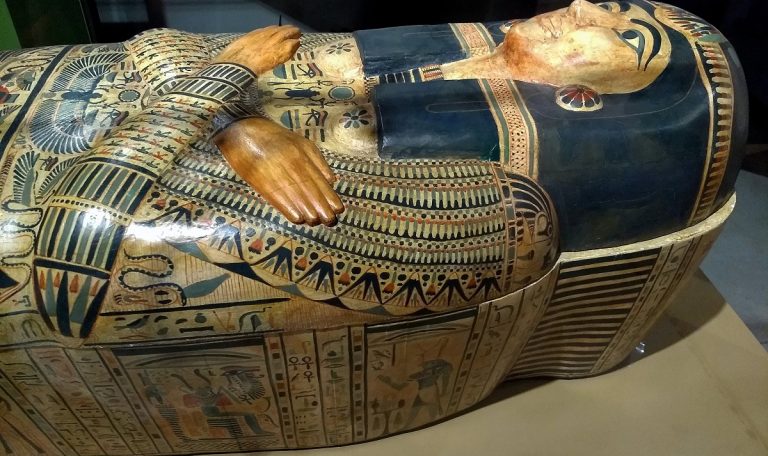The end of World War I was a time for rejoicing. After 4 years of terrible conflicts on a global stage, people finally had something to celebrate. It was around this time, in the early 1920s, that a colourful style emerged that would influence every aspect of society. Wars cause shortages and the end of WWI signalled a return to some kind of normality; coupled with a new generation of creative artists and engineers, the colourful style that is known as Art Deco was born.
Egyptian Influence
The timing of the discovery of King Tutankhamun’s tomb perfectly coincided with the arrival of the Art Deco style. The early 1920s was a great time to be alive and people all over the world were jubilant thanks to the end of the war. In 1923, a British archaeologist by the name of Howard Carter teamed up with Lord Carnarvon to explore the hidden steps that a young Egyptian boy had stumbled upon. They had been exploring the Valley of Kings since 1914, without much success and after the war, they decided to spend one more year digging thanks to a young Egyptian water boy, they hit the mother lode in the tomb of the boy King Tutankhamun. The treasures found inside Tutankhamun’s tomb stunned the world and photos were seen in every newspaper and magazine, which influenced artists of all kinds.
The British Press
The Daily Telegraph sent a journalist to Egypt to cover the archaeological dig, which kept on exceedingly even Carter’s wildest dreams. Of course, the newspapers published images and text of the amazing treasures that were found inside the tomb, and this is believed to be one reason why Egyptian motifs became incorporated into European jewellery.
Scarabs &Felines
When you look at the stunning Art Deco jewellery Sydney or any other city around the world has collected, there is definitely an Egyptian influence, with scarab beetles and cats being just a couple of examples. The Egyptian pharaohs always kept cats, which they believed had special powers. Green was a favoured colour in ancient Egyptian society, and this was successfully brought into Art Deco jewellery, with jade green and darker shades. Birds were also apparent in Egyptian art, and you can find a lot of Art Deco jewellery with wing shapes.
Egyptian Motifs
In 1924, the famous jeweller Cartier placed a full-page colour advertisement in the Illustrated London News with images of Art Deco jewellery that incorporated Egyptian motifs. This jump-started the trend to the point where the upper class were commissioning Art Deco jewellery and that resulted in the trend we know today.
When you look at Art Deco designs, they almost seem to be made to blend with Egyptian shapes and motifs; some pieces are extremely valuable and are highly sought-after. We might wonder what Art Deco would have been like if the Valley of the Kings was not found. The timing was uncanny and the two merged together to provide jewellery with a difference.
If you are interested in Art Deco jewellery with an Egyptian tint, talk to a local antique dealer and see what they have on offer. The best selection of authentic Art Deco engagement rings is catalogued and you can arrange a private viewing with the antique dealer, who likely knows the history of his catalogue and can enlighten you regarding the origins of your chosen Art Deco diamond engagement ring.
The web is full of resources connected to the Art Deco period and Google can answer any questions you might have.

